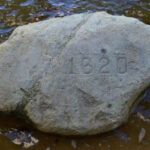Are Sedimentary Rocks Smooth? Yes, sedimentary rocks can be smooth, but their texture varies greatly depending on the processes that formed them. At rockscapes.net, we’ll explore the fascinating world of sedimentary rocks, uncovering the factors that influence their smoothness and other textural characteristics. We’ll delve into the role of weathering, erosion, and deposition in shaping these rocks, providing you with a comprehensive understanding of their diverse textures. Discover how understanding the texture of sedimentary rocks can provide insights into Earth’s history and the environments in which they formed.
1. Understanding Sedimentary Rocks and Their Formation
Sedimentary rocks are formed from the accumulation and cementation of sediments, which can include fragments of pre-existing rocks, mineral grains, and organic matter. These sediments are transported by wind, water, or ice and eventually deposited in layers. Over time, the weight of overlying sediments compacts the lower layers, and minerals precipitate from solution to cement the particles together, forming solid rock.
1.1 The Sedimentary Rock Formation Process
The formation of sedimentary rocks involves several key stages:
- Weathering: The breakdown of rocks into smaller pieces (sediments) through physical and chemical processes.
- Erosion: The transportation of sediments by wind, water, or ice.
- Deposition: The settling of sediments in a new location.
- Compaction: The squeezing together of sediments due to the weight of overlying layers.
- Cementation: The process by which dissolved minerals precipitate out of water and bind the sediment grains together.
1.2 Types of Sedimentary Rocks
Sedimentary rocks are broadly classified into two main categories:
- Clastic Sedimentary Rocks: Formed from fragments of other rocks and minerals, such as sandstone, shale, and conglomerate.
- Chemical Sedimentary Rocks: Formed from the precipitation of minerals from solution, such as limestone, rock salt, and chert.
2. The Smoothness of Sedimentary Rocks: A Closer Look
The smoothness of a sedimentary rock is determined by several factors, including the size and shape of the sediment grains, the degree of sorting and rounding, and the type of cement that binds the grains together.
2.1 Grain Size and Texture
- Fine-grained sedimentary rocks, such as shale and siltstone, tend to be smoother than coarse-grained rocks because they are made up of tiny particles that fit together tightly.
- Coarse-grained sedimentary rocks, such as sandstone and conglomerate, have a rougher texture due to the larger size and irregular shape of the sediment grains.
2.2 Rounding and Sorting
- Well-rounded sediment grains have been smoothed by abrasion during transport, resulting in a smoother rock texture.
- Poorly-rounded sediment grains have sharp edges and corners, leading to a rougher rock texture.
- Well-sorted sedimentary rocks have grains of similar size, which contributes to a more uniform texture.
- Poorly-sorted sedimentary rocks have grains of varying sizes, resulting in a more uneven texture.
2.3 Cementation
- The type of cement that binds the sediment grains together can also affect the smoothness of the rock.
- Fine-grained cements, such as silica and clay, can create a smoother surface than coarse-grained cements, such as calcite.
3. Factors Influencing the Texture of Sedimentary Rocks
Several environmental factors influence the texture of sedimentary rocks during their formation.
3.1 Weathering Processes
Weathering breaks down rocks through mechanical and chemical processes, influencing the size and shape of sediment grains. Mechanical weathering includes pressure expansion, frost wedging, root wedging, and salt expansion. Chemical weathering includes carbonic acid and hydrolysis, dissolution, and oxidation. According to research from Arizona State University’s School of Earth and Space Exploration, mechanical weathering primarily affects the size of sediment, while chemical weathering alters its composition and shape.
3.2 Erosion and Transport
Erosion and transport mechanisms such as water, wind, and ice affect the rounding and sorting of sediment grains. Water transport tends to round sediment grains over long distances, as cited in the Journal of Sedimentary Research. Wind transport is very effective in sorting sediment by size, which is essential in creating uniform deposits.
3.3 Depositional Environment
Different depositional environments, such as rivers, lakes, and oceans, have varying energy levels and sediment supply rates, which affect the texture of the resulting sedimentary rocks. For example, high-energy environments such as fast-flowing rivers tend to deposit coarse-grained sediments, while low-energy environments such as lakes and deep oceans tend to deposit fine-grained sediments.
3.4 Lithification Processes
Lithification includes compaction and cementation, where sediments are compressed and bound together by mineral precipitation. According to the journal Sedimentary Geology, compaction reduces pore space and increases density, while cementation fills the remaining pore spaces, which is critical in determining the final texture and strength of the rock.
4. Examples of Sedimentary Rocks and Their Smoothness
Let’s explore some common types of sedimentary rocks and their typical textures.
4.1 Shale
Shale is a fine-grained sedimentary rock formed from compacted mud and clay. It is typically smooth to the touch and has a platy or layered structure.
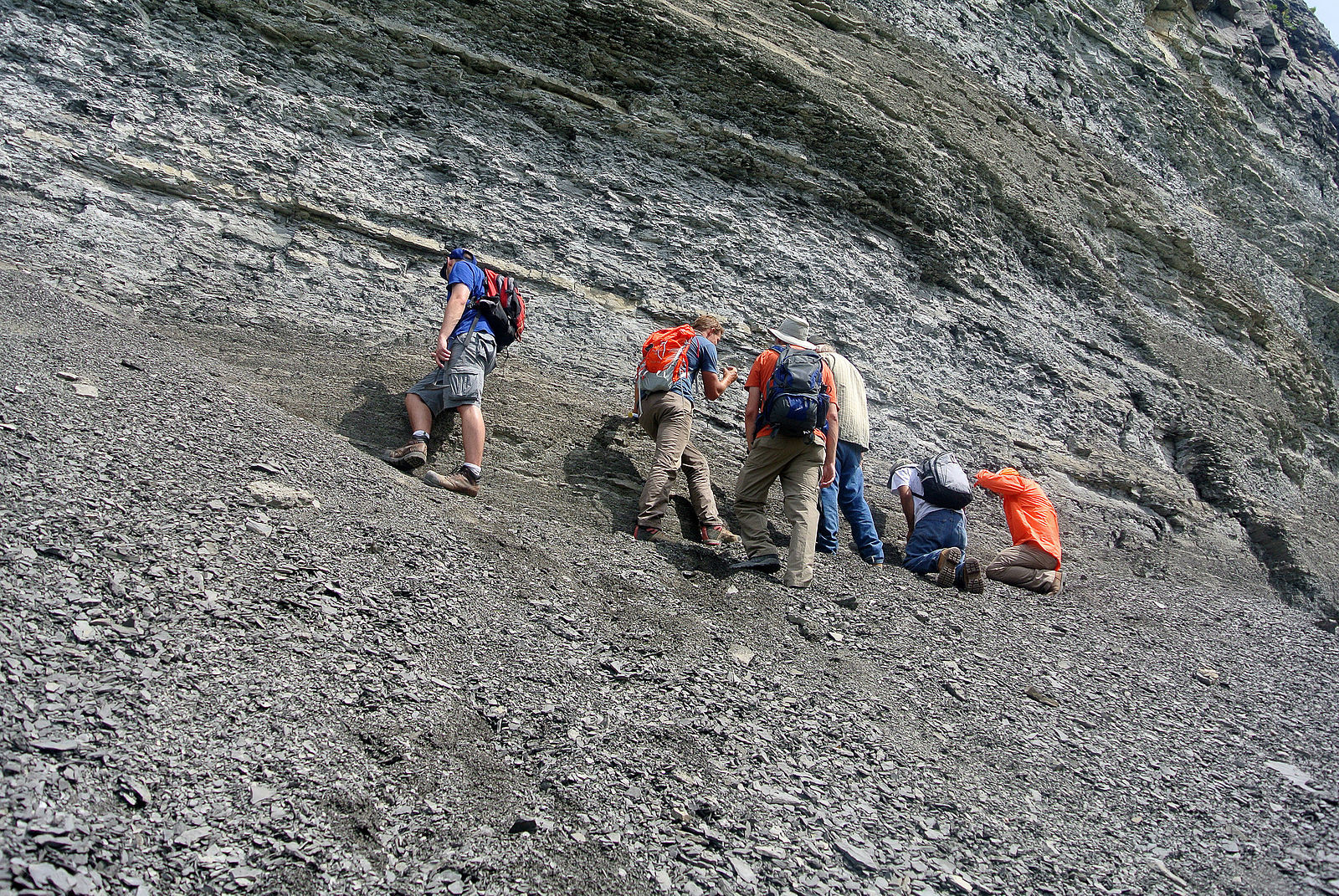 Shale rock face with thin layers, demonstrating its fissile nature
Shale rock face with thin layers, demonstrating its fissile nature
4.2 Siltstone
Siltstone is a slightly coarser-grained sedimentary rock than shale, formed from compacted silt. It has a slightly gritty texture but is generally still considered smooth.
4.3 Sandstone
Sandstone is a medium-grained sedimentary rock formed from cemented sand grains. It has a rougher texture than shale and siltstone, with individual sand grains often visible to the naked eye.
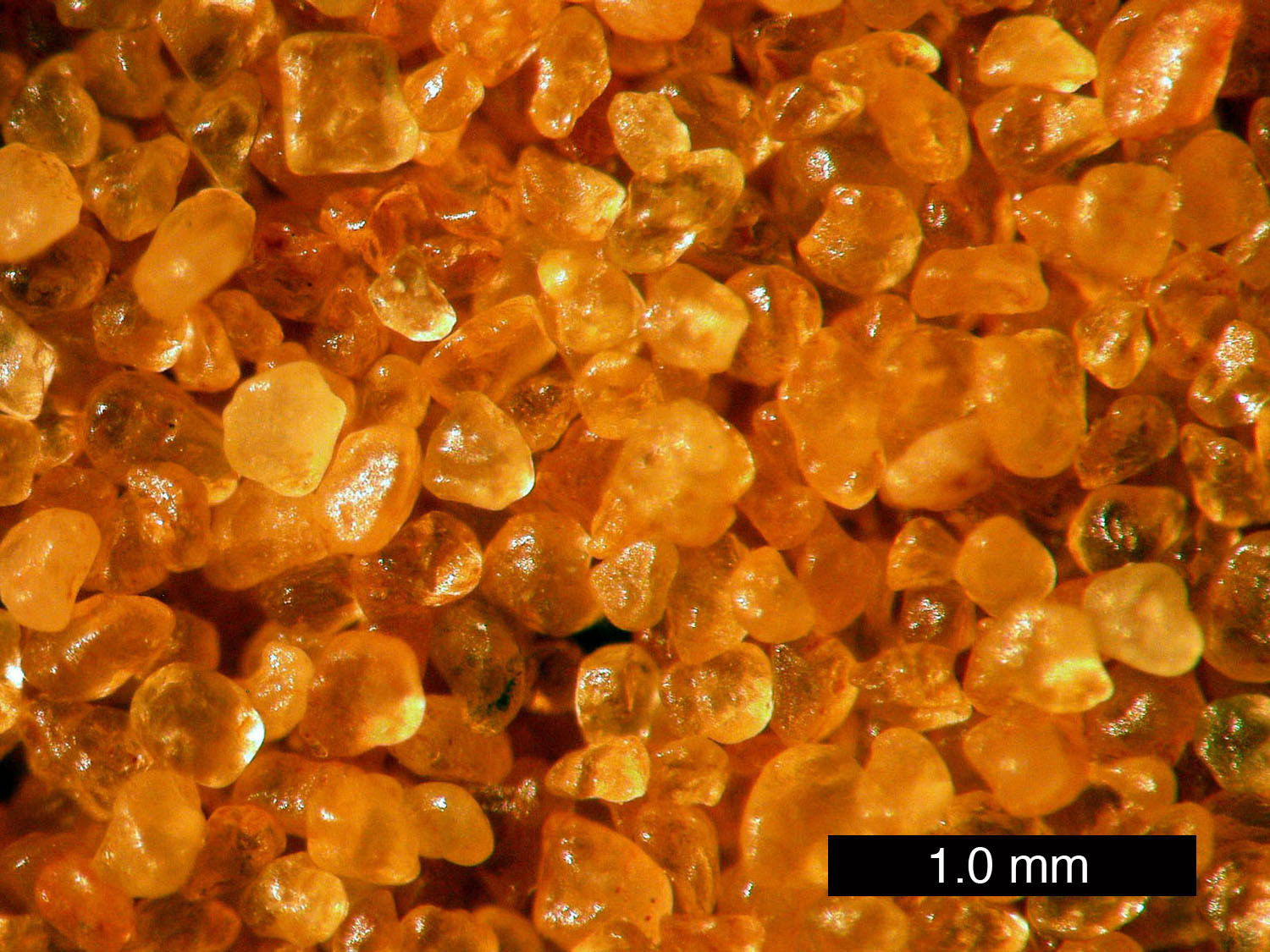 Windblown sand grains that are enlarged showing rounding and frosted surfaces as a result of wind transport
Windblown sand grains that are enlarged showing rounding and frosted surfaces as a result of wind transport
4.4 Conglomerate
Conglomerate is a coarse-grained sedimentary rock formed from cemented gravel and pebbles. It has a very rough texture, with large, rounded clasts embedded in a finer-grained matrix.
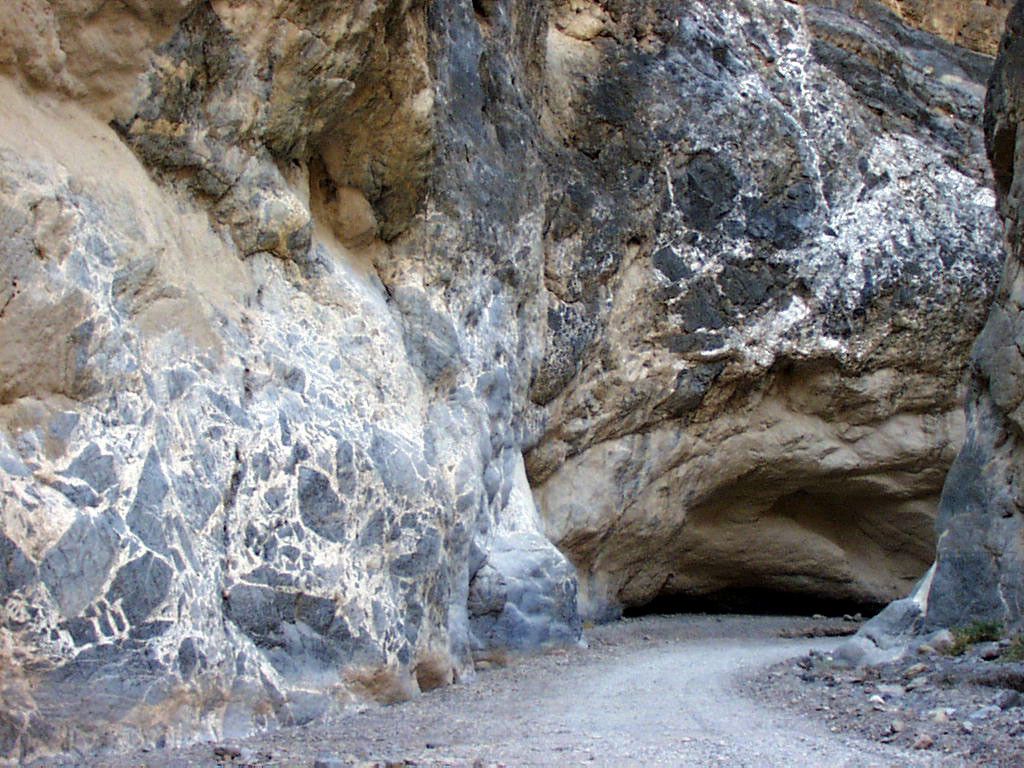 Grey rock consisting of a larger rock where the angular edges have broken off
Grey rock consisting of a larger rock where the angular edges have broken off
4.5 Limestone
Limestone is a chemical sedimentary rock formed from the precipitation of calcium carbonate. Its texture can vary depending on the grain size and composition. Some limestones are smooth and fine-grained, while others are rough and contain visible fossils.
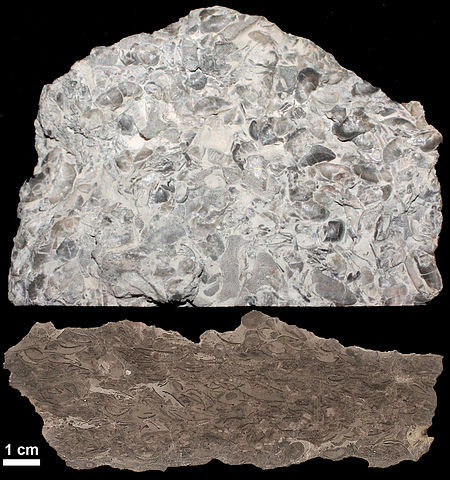 Limestone rock showing many etched fossils within
Limestone rock showing many etched fossils within
4.6 Rock Salt
Rock salt is a chemical sedimentary rock formed from the evaporation of saltwater. It is typically smooth and crystalline, with a distinctive salty taste.
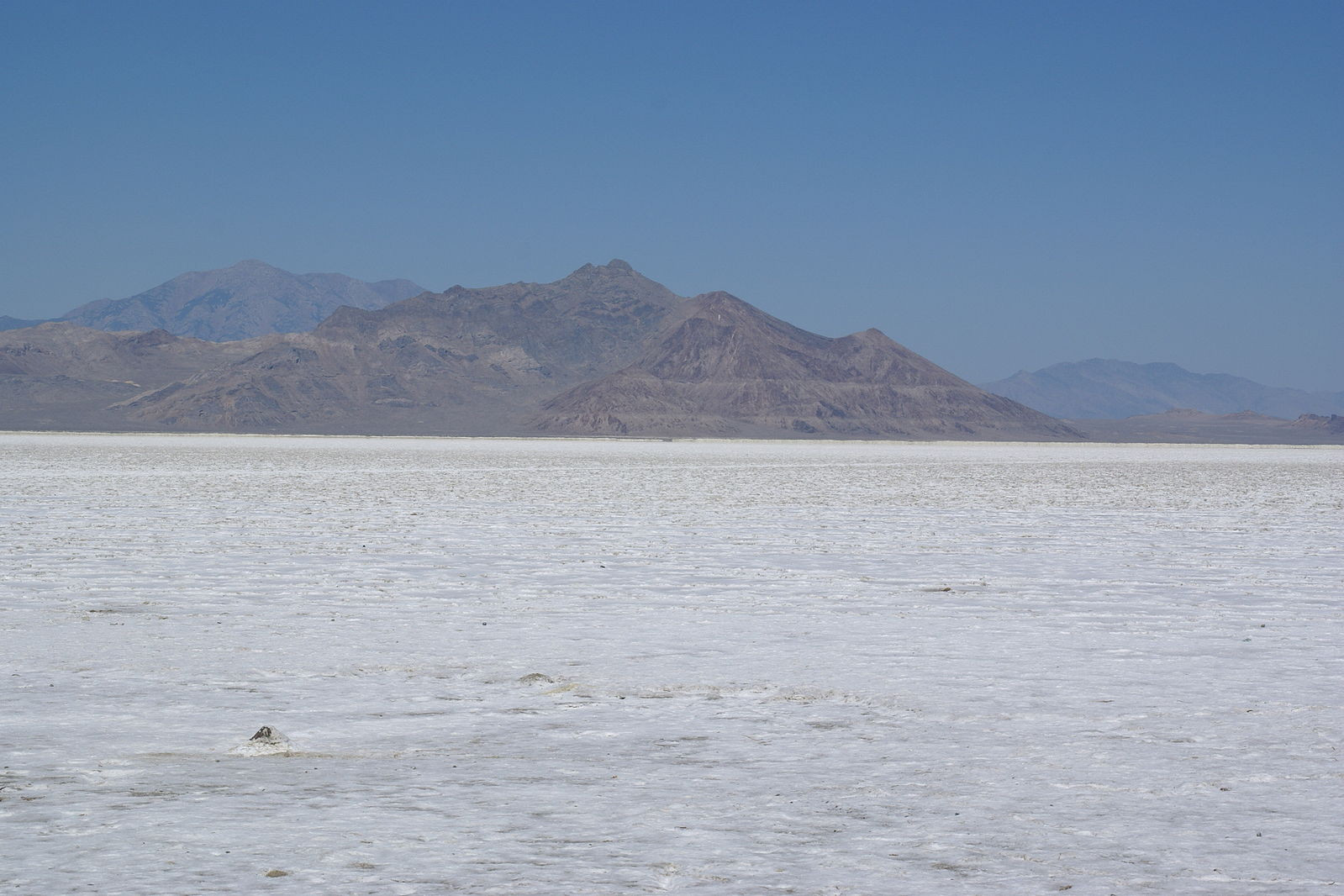 The ground is white and flat across the landscape
The ground is white and flat across the landscape
5. Applications of Sedimentary Rocks in Landscaping
Sedimentary rocks are widely used in landscaping due to their natural beauty, durability, and variety of textures and colors.
5.1 Pathways and Patios
Sandstone and limestone are popular choices for creating pathways and patios. Their relatively smooth surfaces provide a comfortable walking surface, and their natural colors blend well with outdoor environments.
5.2 Retaining Walls and Rock Gardens
Larger sedimentary rocks, such as sandstone and conglomerate, can be used to build retaining walls and create rock gardens. Their rough textures add visual interest and provide a natural look.
5.3 Water Features
Sedimentary rocks can be used to create natural-looking water features, such as waterfalls and ponds. Their textures and colors enhance the beauty of the water and create a tranquil atmosphere.
5.4 Decorative Accents
Smaller sedimentary rocks, such as pebbles and gravel, can be used as decorative accents in gardens and landscapes. They add texture and color to planting beds and help to suppress weeds.
6. Sourcing Sedimentary Rocks for Landscaping Projects
When sourcing sedimentary rocks for landscaping projects, it’s important to consider the following factors:
6.1 Type of Rock
Choose the type of sedimentary rock that is best suited for your specific application, considering its texture, color, and durability.
6.2 Size and Shape
Select rocks that are the appropriate size and shape for your project, ensuring that they are easy to handle and install.
6.3 Quality and Durability
Inspect the rocks for any signs of weathering or damage, and choose rocks that are strong and durable enough to withstand the elements.
6.4 Supplier Reputation
Purchase rocks from a reputable supplier who can provide high-quality materials and reliable service.
7. Maintenance and Care of Sedimentary Rocks in Landscaping
To keep sedimentary rocks looking their best in landscaping applications, follow these maintenance tips:
7.1 Cleaning
Regularly clean the rocks with water and a mild detergent to remove dirt and debris. Avoid using harsh chemicals or abrasive cleaners, which can damage the rock surface.
7.2 Sealing
Consider sealing the rocks with a stone sealant to protect them from staining and weathering. Reapply the sealant every few years as needed.
7.3 Weed Control
Keep the area around the rocks free of weeds to prevent them from becoming overgrown and obscuring the rocks.
7.4 Repair
Repair any cracks or damage to the rocks promptly to prevent further deterioration.
8. Frequently Asked Questions (FAQs) About Sedimentary Rocks
8.1 Are all sedimentary rocks smooth?
No, the smoothness of sedimentary rocks varies based on grain size, rounding, sorting, and cementation.
8.2 What makes some sedimentary rocks rough?
Coarse grain size, poor rounding, and certain cement types make sedimentary rocks rough.
8.3 How does weathering affect the texture of sedimentary rocks?
Weathering breaks down rocks into sediment, which affects their size and shape, ultimately influencing texture.
8.4 Can sedimentary rocks be used in water features?
Yes, sedimentary rocks can enhance water features with their varied textures and colors.
8.5 What types of sedimentary rocks are best for pathways?
Sandstone and limestone are excellent choices due to their smooth surfaces and durability.
8.6 How do I clean sedimentary rocks in my garden?
Use water and mild detergent; avoid harsh chemicals that can damage the surface.
8.7 What is the role of cementation in sedimentary rock texture?
Cementation binds grains together; fine-grained cements create smoother surfaces.
8.8 Do different depositional environments affect rock texture?
Yes, high-energy environments lead to coarse grains, while low-energy environments deposit fine grains.
8.9 Why is sorting important in sedimentary rock texture?
Well-sorted rocks have uniform textures, while poorly-sorted rocks have uneven textures.
8.10 Where can I find high-quality sedimentary rocks for my project?
Visit rockscapes.net for a wide selection of sedimentary rocks perfect for any project.
9. Conclusion: Embracing the Beauty and Versatility of Sedimentary Rocks
Sedimentary rocks are a fascinating and diverse group of rocks that offer a wide range of textures, colors, and applications. Whether you’re looking to create a smooth, inviting pathway or a rugged, natural-looking rock garden, sedimentary rocks can provide the perfect solution. By understanding the factors that influence their texture and following proper maintenance practices, you can enjoy the beauty and versatility of sedimentary rocks for many years to come.
Ready to explore the endless possibilities of sedimentary rocks in your landscaping projects? Visit rockscapes.net today to discover a wide selection of high-quality sedimentary rocks, design inspiration, and expert advice. Let us help you create a landscape that is both beautiful and sustainable. Address: 1151 S Forest Ave, Tempe, AZ 85281, United States. Phone: +1 (480) 965-9011. Website: rockscapes.net.
